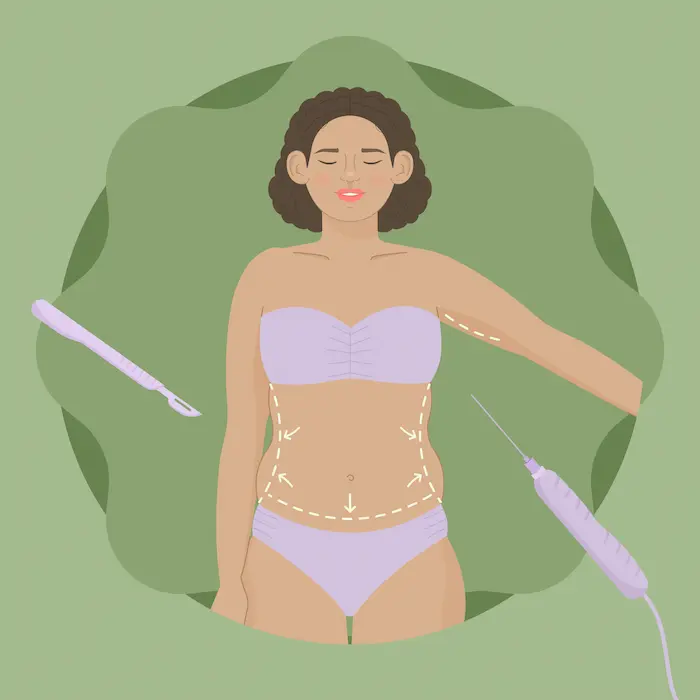
Art of Tummy Tuck Scar Maintenance:Path to Beautiful Abdomen
A tummy tuck, medically known as abdominoplasty, is a surgical procedure that helps remove excess fat and skin from the abdominal area while tightening the underlying muscles.
A tummy tuck, medically known as abdominoplasty, is a surgical procedure that helps remove excess fat and skin from the abdominal area while tightening the underlying muscles. It's a popular choice for individuals looking to achieve a flatter and more toned midsection. However, like any surgery, tummy tucks come with the potential for scarring. These scars can vary in size and appearance, but with proper care, you can minimize their visibility and promote optimal healing. In this article, we'll explore the things you should do to ensure your tummy tuck scars heal as smoothly as possible.
Understanding Tummy Tuck Scars
Before diving into scar care, it's essential to understand what tummy tuck scars are and how they develop. During a tummy tuck procedure, your surgeon will make incisions to access and reshape the abdominal area. These incisions are strategically placed to be as inconspicuous as possible, often along the bikini line. While surgeons strive to create minimal scarring, it's important to remember that scars are a natural part of the healing process.
The type and extent of tummy tuck scars can vary depending on the specific surgical technique used. Common types of tummy tuck procedures include:
Full Tummy Tuck: This involves a horizontal incision from hip to hip, resulting in a scar along the lower abdomen, often hidden by underwear or a swimsuit.
Mini Tummy Tuck: In this procedure, a smaller incision is made, and the scar is typically shorter than that of a full tummy tuck.
Extended Tummy Tuck: This technique is more comprehensive and may require a longer incision, often resulting in a longer scar that extends beyond the hips.
Regardless of the type of tummy tuck you undergo, proper scar care is crucial for achieving the best possible outcome.
Your Ultimate Guide to Tummy Tuck Scars and Beautiful Abdomen
1. Follow Your Surgeon's Post-Operative Instructions
The most critical step in scar care begins immediately after your tummy tuck surgery. Your surgeon will provide you with specific post-operative instructions tailored to your unique situation. These instructions are designed to optimize the healing process and minimize scarring. Follow them meticulously, including taking prescribed medications, wearing compression garments as directed, and attending all follow-up appointments.
2. Keep the Incision Area Clean and Dry
Proper hygiene is essential for preventing infection and promoting scar healing. Keep the incision area clean by gently washing it with mild soap and water as instructed by your surgeon. Avoid harsh or scented soaps, which can irritate the incision site. After cleaning, pat the area dry with a clean, soft cloth—never rub or use abrasive materials.
3. Protect Your Scars from the Sun
Exposure to UV radiation can cause scars to become darker and more noticeable. Protect your tummy tuck scars from the sun by wearing clothing that covers the incision area or applying a broad-spectrum sunscreen with an SPF of at least 30. Consult your surgeon for guidance on when it's safe to expose your scars to sunlight.
4. Use Scar-Reducing Products
There are various scar-reducing products available over the counter or by prescription. Silicone-based gels, sheets, and creams have been shown to help flatten and soften scars. These products can be applied as recommended by your surgeon or as indicated on the packaging. It's essential to use them consistently for the best results.
5. Massage Your Scars
Gentle scar massage can improve blood circulation to the area, helping scars become less prominent and more pliable. Begin scar massage only after you've received clearance from your surgeon, usually a few weeks post-surgery. Use a moisturizing lotion or silicone gel to reduce friction during the massage. With clean hands, use circular motions to massage the scar for a few minutes each day.
6. Stay Hydrated and Maintain a Healthy Diet
Proper hydration and a balanced diet can support overall healing and skin health. Drinking enough water helps keep your skin hydrated, while a diet rich in vitamins, minerals, and antioxidants can promote tissue repair. Incorporate fruits, vegetables, lean proteins, and whole grains into your daily meals to provide your body with the necessary nutrients for optimal healing.
7. Avoid Smoking and Excessive Alcohol
Smoking and excessive alcohol consumption can hinder the healing process and negatively impact scar formation. Nicotine constricts blood vessels, reducing blood flow to the surgical site, while alcohol can dehydrate your body. Both of these factors can lead to delayed healing and more noticeable scars. If you smoke, it's an excellent opportunity to quit, and if you drink alcohol, do so in moderation.
8. Consider Scar Revision
In some cases, tummy tuck scars may not heal as expected, or they may become raised, uneven, or overly noticeable. Scar revision surgery is an option to improve the appearance of such scars. This procedure involves removing the old scar tissue and creating a new incision with meticulous care. While it may not completely eliminate scars, it can make them less conspicuous and more aesthetically pleasing.
9. Be Patient and Realistic
Scars take time to mature and fade. It's essential to be patient and realistic about the outcome of your tummy tuck scars. While diligent scar care can significantly improve their appearance, some level of scarring is inevitable. However, with time, scars tend to become less noticeable and blend better with your natural skin tone.
Conclusion
Tummy tuck scars are a common side effect of abdominoplasty, but with proper care and attention, you can minimize their visibility and promote optimal healing. Follow your surgeon's post-operative instructions, maintain good hygiene, protect your scars from the sun, and consider scar-reducing products and massage techniques. Additionally, adopting a healthy lifestyle by staying hydrated, eating well, and avoiding smoking and excessive alcohol can support the healing process. Be patient and realistic, and remember that tummy tuck scars tend to improve over time. If you're unhappy with your scars, consult your surgeon about potential scar revision options. Ultimately, by taking these steps, you can achieve the best possible results for your tummy tuck scars and enjoy the benefits of a flatter, more toned abdomen.


Comments
Login & Write comment